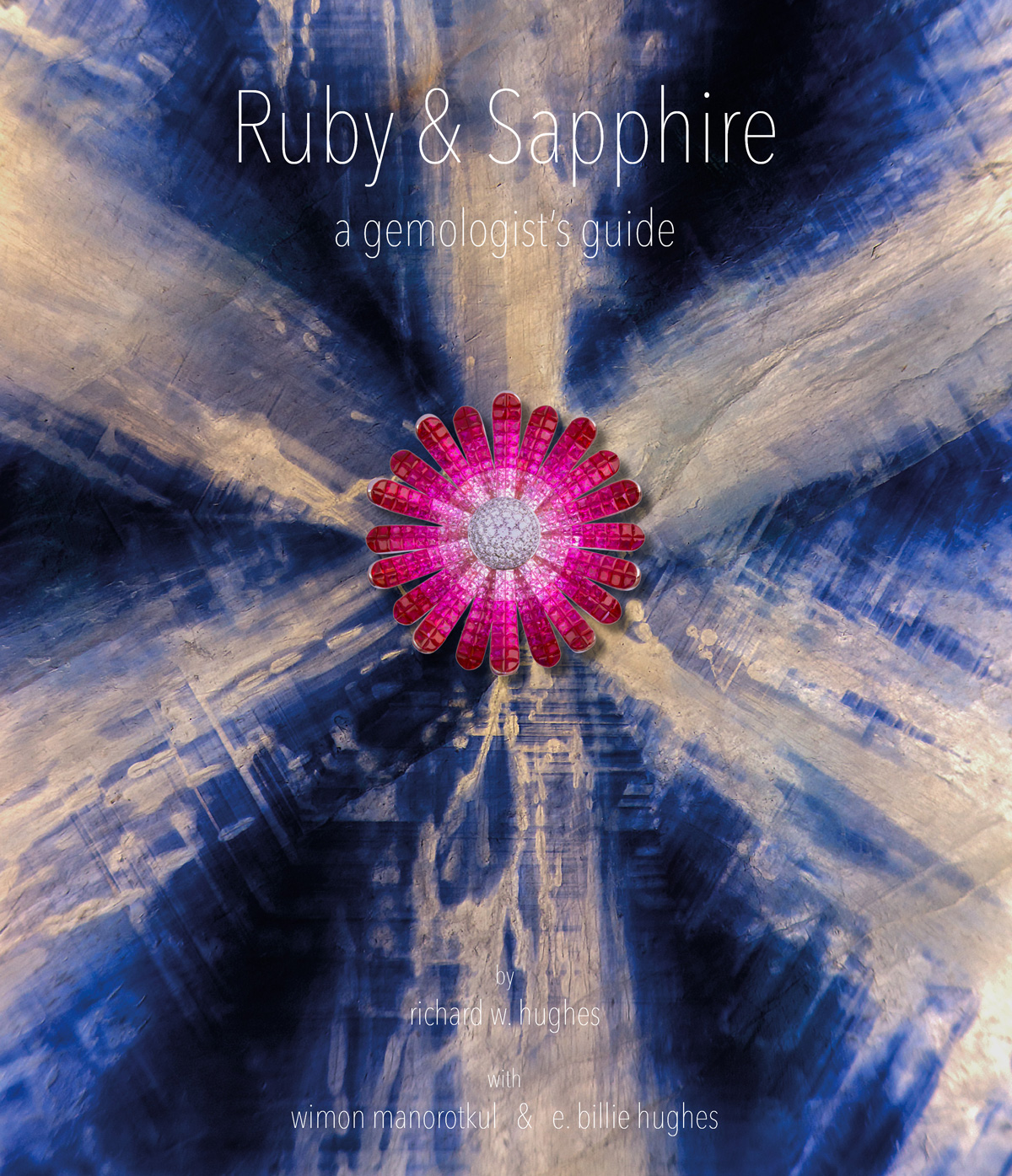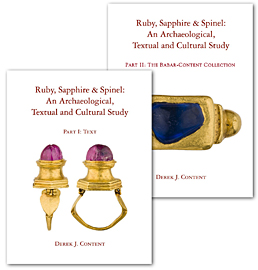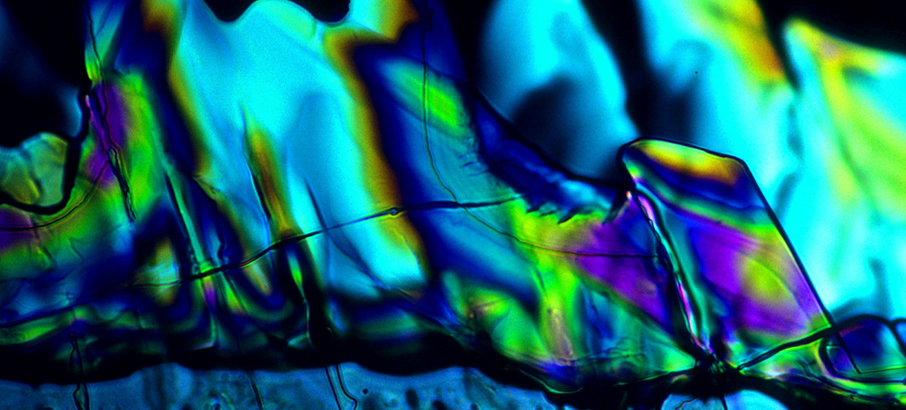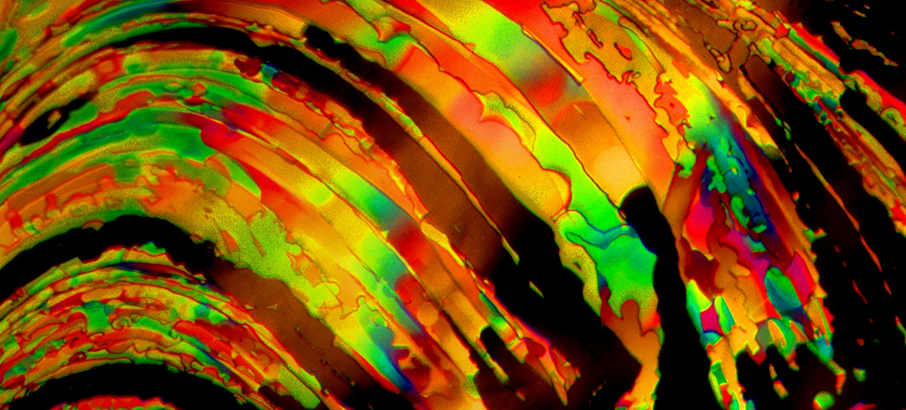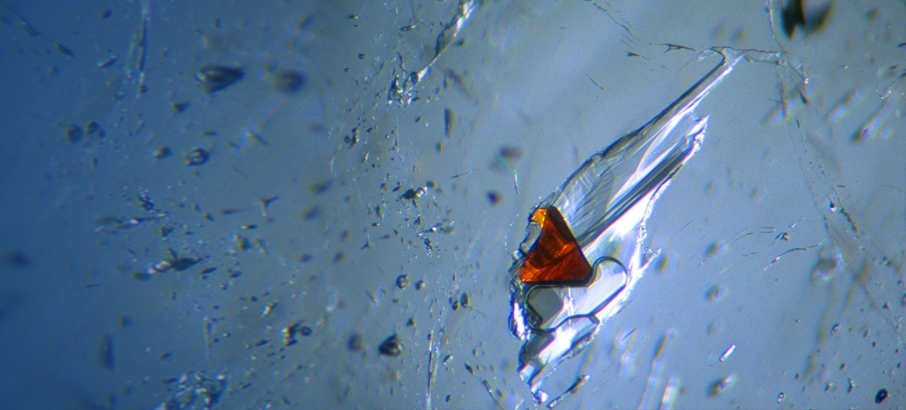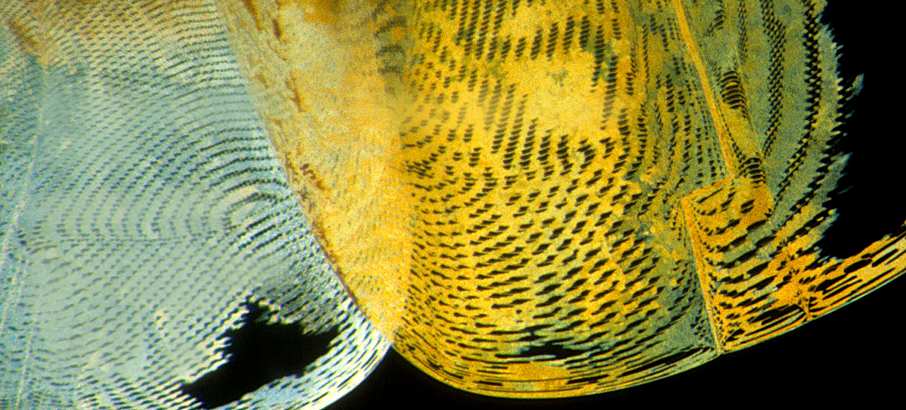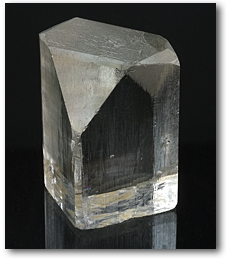TENTH ANNUAL SINKANKAS SYMPOSIUM – PROGRAM *
Recognized specialists in fields ranging from geology and mineralogy to history, treatment, cutting, collecting and selling will make presentations on topaz.
Meg Berry – Cutting Topaz
Dr. D. B. Hoover – The Historical Transmutations of Topaz – abstract »
The Greeks and Romans write about a gem named topazos, or topazus from which our modern topaz derives its name. The Romans characterize topazus as being greenish to smoky or honey colored, raising questions of what modern mineral they may have been describing. This paper examines the historical literature in an effort to understand what minerals may have been included in the name topazus and what other names may have been applied to our topaz.
John Koivula – The MicroWorld of Topaz – abstract »
Due to its high degree of transparency, gem quality topaz is an ideal mineral to showcase inclusions that typify the hydrothermal, pegmatitic and pneumatolytic geological environments in which it crystallizes. Through photomicrography, this presentation gives a visual overview of the fluid and solid inclusions, as well as the distinctive structural features sometimes observed in topaz. A brief overview will also be given on the distinctive microfeatures resulting from the various artificial treatment processes sometimes applied to topaz.
Bill Larson – Collecting Quality Topaz
Shane McClure – The Treatments of Topaz – abstract »
Topaz is relatively abundant and inexpensive in its colorless form. This makes it a perfect subject for treatment by various methods to color the material and make it more marketable. Many treatment methods have been applied to topaz over the years – perhaps the best known being irradiation followed by annealing that creates a blue color. The discovery of this treatment created a huge market for blue topaz, being inexpensive and very attractive.
This is only one way that topaz is treated today. Coatings of various kinds are common, and attempts at diffusion treatment created a hard but very thin layer of color that seems to be the result of a chemical reaction. Even topaz that is naturally colored is sometimes treated with heat or irradiation to change it to a different color.
This discussion will review all of the treatments of topaz that one might encounter today and will review what methods there are to identify such treatments, if such methods exist.
Dr. George Rossman – The Colors of Topaz – abstract »
Although frequently colorless, topaz can be colorful as demonstrated by the various shades of imperial topaz to the striking blues of irradiated topaz. Yet, the origin of its color has received much less study than other common gem minerals. Examples of various colors will be presented, as well as some insights into the atomic level origins of the colors.
Dr. James Shigley – Topaz Geology and Localities – abstract »
Topaz is one of the more important colored gemstones. It is a less common rock-forming mineral that occurs in igneous rocks in a variety of geologic environments ranging from granites and pegmatites to volcanic rhyolites, and from hydrothermal veins to greisens. On rare occasions, it is also found in metamorphic rocks. The conditions and environments of topaz formation, and the major topaz localities around the world, will be summarized in this presentation.
Dr. Skip Simmons – Topaz Mineralogy– abstract »
Topaz is an aluminum fluorosilicate with the chemical composition Al2SiO4(F, OH)2 with a narrow range of composition. The only significant variation in composition is limited substitution of hydroxyl ions for fluorine. Most gem quality topaz is fluorine dominant. Topaz is orthorhombic, typically forming prismatic crystals. Structurally, it is a nesosilicate with isolated SiO4 tetrahedra. The physical properties, chemical composition and crystal structure of topaz will be examined in this presentation.
Robert Weldon – How Brazilian Bandeirantes Blazed Trails to Topaz – and other Gems – abstract »
In the 1400s, the colonial imperative to discover the richess of South America was largely dictated by two major global powers—one was Spain, which conquered territory in the Western Andean regions of the continent. The second was Portugal, which concentrated its efforts in the Amazon basin—the jungle lowlands to the East. The discovery of emeralds in Colombia reverberated among the monarchies of Europe, and a race was soon afoot to find emeralds and precious metals in Brazil. While emeralds were not found in Brazil for several centuries after the race began, one cannot blame the Portuguese trying! The result of these quixotic efforts opened Brazil's hinterlands, uncovering topaz, tourmaline, spodumene, quartz, chrysoberyl, opal, diamonds—and other beryls. Join Robert Weldon in a journey to some of these localities and a magnificent tale of Bandeirantes—Portugal's adventurous flag–bearers.
* speakers or topics subject to change without notice
-
CLOSE [x]
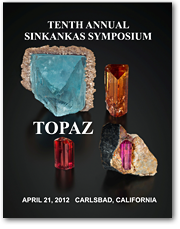
Tenth Annual Sinkankas Symposium – Topaz (original papers)
Edited by Roger Merk
Photographs by Mia Dixon, John Koivula, Skip Simmons, Orasa Weldon and Robert Weldon
Table of Contents
Acknowledgments 4
Speaker and Author Biographies 5
Papers –
Dr. D.B. Hoover, The Historical Transmutation of Topaz 11
Dr. Skip Simmons, Topaz Mineralogy 21
Dr. James A. Shigley, Topaz Geology and Localities 31
John Sinkankas, TOPAZ From Gemstones of North America 41
John Koivula, The MicroWorld of Topaz 55
Si and Ann Frazier, Topaz Words and Their Surrogates 63
Availability: April 21, 2012
Cost: USD $20.00 + shipping (varies according to shipping options and destination)
Specifications: 8/5" x 11"; soft cover, 88p., 25 col. pl., 1 B&W pl., 9 diag. and tables
Place an Order »
TENTH ANNUAL SINKANKAS SYMPOSIUM – IN REVIEW

More than 125 attendees arrived at the GIA's Robert Mouawad Campus, where they were greeted by a picture-postcard setting overlooking the Pacific Ocean and perfect weather. This year's contributors, each authorities in their respective disciplines, was introduced by Roger Merk, the event's organizer. The day was inaugurated with a presentation on the "Historical Transmutations of Topaz," by keynote speaker D. B. Hoover. Known for his reference book, "Topaz" (Butterworth–Heinemann, 1993), Dr. Hoover spoke about nomenclature that has led to confusion historically between the mineral known today as topaz and other gems, notably citrine and peridot. He speculated on ancient awareness of this gem, owing to its occurrence in the tin mines of Cornwall in Roman Britain, where it is found in massive greisens, but usually in small crystal sizes.
Skip Simmons, travelled from the University of New Orleans, to make a repeat appearance, presenting an entertaining and informative lecture on "Topaz Mineralogy," which was illustrated with his signature animated graphics of topaz crystallography. He provided current information on topaz localities, which augmented GIA's Distinguished Research Fellow Jim Shigley's discussion of "Topaz Geology and Localities." Shane F. McClure, GIA's director of gem identification services, spoke on "The Treatments of Topaz," an important topic in the gem trade, which was complemented in George Rossman's presentation on "Color in Topaz," in which he presented an overview of a technical subject in accessible terms for a non-technical audience. GIA's analytical microscopist John Koivula presented a pictorial tour of "The Microworld of Topaz," in which he discussed the internal features that attest to the paragenesis of a gem host and its guest inclusions, sometimes providing evidence of geographic origin or the intentional application of treatment techniques intended to alter or enhance the appearance of topaz.
Inimitable raconteur of minerals Bill Larson showed impressive topaz specimens in a range of colors from localities around the world in his presentation "Collecting Quality Topaz." Lapidary artist Meg Berry presented a step-by-step process of carving topaz from gem rough to fashioned, polished carving in "Cutting Topaz." This year, Robert Weldon, Manager of Photography and Laboratory Publications at GIA, presented an historical narrative "How Brazilian Bandeirantes Blazed Trails to Topaz – and other Gems," which was illustrated with his beautiful photographs.
The GIA hosted an on-site box lunch and refreshments in the morning and afternoon. Attendees had the opportunity to view the recently opened GIA Museum exhibit, "Tablet to Tablet: Treasured Pages from Past to Present," featuring a selection of rare books from the Richard T. Liddicoat Gemological Library and Information Center. Some of the featured volumes will have originally belonged John Sinkankas, which served to remind attendees at his namesake symposium that this giant in the world of minerals continues to impart a pervasive significance and enduring legacy to the field he loved.
Printed papers of the Sinkankas Symposium – Topaz are now available.
Place an Order »
TENTH ANNUAL SINKANKAS SYMPOSIUM – SPEAKER BIOGRAPHIES
Meg Berry – bio »
Meg Berry has been a lapidary artist working in the gem and jewelry industry since 1974. She studied gem cutting at Grieger's Inc. in Pasadena, where she was awarded a Master Faceter Certificate. She also studied gemology at the Gemological Institute of America (GIA) and received designations in Colored Stones and Gem Identification. Meg worked at Grieger's and also at a large Los Angeles wholesale gem house. Since From 1989 to 2003, she was a full-time cutter with Pala International, Inc., faceting myriad colored stones, as well as cabbing, carving, designing and stringing necklaces, and repairing and re-cutting damaged stones. Currently, she owns and operates a small lapidary called Megagem, where she works primarily for the trade and accepts commisions of custom cutting for private clients.
Meg has been recognized with more than a dozen trophies and awards at the annual American Gem Trade Associations' Cutting Edge competition, Tucson, Arizona, and has received international acclaim and contracts for her work. In 1992, the late treasure hunter, Mel Fisher, commissioned Meg to facet the largest of the rough emerald crystals recovered from the Spanish galleon "Atocha," which sank in 1622 in the Florida straits. Since then, Meg has cut more than one hundred of these "old mine" emerald crystals. During the construction of the GIA campus in Carlsbad, California, the late Vince Manson commissioned Meg to cut and polish the concept pieces of rocks and slabs placed as name plates outside each door.
Meg currently produces one-of-a-kind extraordinary gemstone creations using a combination of techniques that may include faceting, carving, frosting and piercing—sometimes all on the same stone! Her work is thematic, designed to elicit an emotional response and an appreciation for the beauty of Nature.
Dr. D.B. Hoover – bio »
Donald B. Hoover is a research geophysicist, retired, from the United States Geological Survey. At the USGS he worked principally with electrical and electrogeochemical methods applied to geological, geothermal and ore deposits studies. He lived in Brazil for two years as a USGS advisor to the Brazilian Government and has returned a number of times with both the USGS and as a private citizen. He continues to collaborate with colleagues at the Federal University of Belo Horizonte, Brazil. He is author of over 100 papers on geophysics.
He has had a life-long interest in gems and minerals which began with collecting in the pegmatites of Southern Maine in the late 1940s. Later he studied with the Gemological Institute of America, obtained his FGA from the British Gemmological Association, and was awarded an honorary Fellowship from the Australian Gemmological Association in 2007. He is author of 25 papers on gems and gemology, and of the monograph "Topaz" in the Butterworth-Heinemann series on gems. His current research is directed at measurements of the magnetic susceptibilities of cut gems, having developed a simple, inexpensive technique for the measurements.
Education: B.S. (Electrical Engineering) Case Institute of technology; M.S. (Electrical Engineering) University of Michigan; D.Sc. ( Geophysics) Colorado School of Mines
John Koivula – bio »
John Koivula has spent over 50 years studying and photographing the microworld of gemstones. He has published more than 800 articles and notes on gemstone inclusions and related topics, and he is a contributor to several books, including the American Geological Institute's Glossary of Geology, Robert Webster's Gems, and the GIA's Diamond Dictionary. Mr. Koivula is co-author with Dr. E. Gübelin of the Photoatlas of Inclusions in Gemstones, Volumes 1, 2 and 3, and author of The MicroWorld of Diamonds. Koivula holds degrees in geology and chemistry, and the gemological credentials G.G., C.G. and F.G.A. He was awarded a fellowship in the Royal Microscopical Society, and also serves on the executive board of the International Gemmological Conference group (IGC). He is also an honorary life member of the Finnish Gemmological Society and the Gemmological Association of Great Britain, and was named one of the 64 most influential people of the 20th century in the jewelry industry by Jewelers' Circular Keystone Magazine. Among the honors he has received include the Richard T. Liddicoat Award from GIA (Gemological Institute of America), the Robert M. Shipley Award and Richard T. Liddicoat Journalism Award from the American Gem Society, the Scholarship Foundation Award from the American Federation of Mineralogical Societies, and the Antonio C. Bonanno Award for excellence in gemology from the international Accredited Gemologists Association. John Koivula is Analytical Microscopist at GIA.
Bill Larson – bio »
Bill Larson, President of Pala International, Inc., gemstone importers and lapidaries, began his interest in fine gems and minerals at a very early age when he combed the hills of northern San Diego County with his father, Josephine Scripps, and John Sinkankas in search of mineral and gem crystals. He earned an advanced degree in geological engineering, receiving the coveted silver diploma from the Colorado School of Mines. He then spent two years in the Army assigned to special services, teaching lapidary and jewelry making.
In 1968, Larson and partner Ed Swoboda formed Pala Properties International, Inc., and purchased three gem mines: The Tourmaline Queen, Stewart Lithia, and Pala Chief, whose histories go back to the 1800s. In 1972, an extraordinary strike established Pala Properties International as one of the prime sources of tourmaline in the world, and the only firm actively mining pink tourmaline in all of North America. In 1980, Larson bought out his partner, sold three properties, and leased the Himalaya Mine. He then started dealing on a more international scale, renaming the corporation Pala International. As one of the leading firms in gemstone mining Pala International has now been involved in mining operations for silver minerals in Mexico, dredging the alluvial gravels of Sri Lanka, mining tsavorite and tanzanite in Kenya and Tanzania, as well as mining tourmaline at the Himalaya Mine in Mesa Grande. In 1969, as a separate but joint venture, two outstanding retail shops called The Collector, located in Fallbrook and La Jolla, California, were started as showcases for fine-colored stones, jewelry, and objects d'art. Jeanne Larson, Bill's wife, manages both of the stores.
Larson is a respected veteran of the gem and mineral world. He travels extensively throughout Europe, South America, Africa, and the Orient and deals directly with miners, gem collectors, and museum curators. Bill has made more than 20 trips into Myanmar (Burma) and with the permission of Myanmar Gems Enterprise has visited and consulted on primary mining techniques in the famous Mogok Mining District. Bill's personal mineral collection is considered by many specialists in the field to be one of the finest ever assembled. Among his career highlights, in June 2003, he appraised Swiss gemologist Eduard Gübelin's collection, one of the world's finest, which was accessioned by GIA. Pala and its staff has a long history of involvment with GIA, working closely on various activities such as sponsoring a charity Golf Tournament to benefit both Children's Hospital and the Starlight Foundation.
Larson is often called upon to be a media spokesperson on jewelry and gem topics. He is consulted frequently as an authority to help with the colored stone pricing index and reports on international trends in gemstone pricing for periodicals such as Jewelers' Circular-Keystone," "National Jeweler," and "Modern Jeweler", as well as co-advising with Pala's Vice President, Josh Hall, on "The Guide." Pala International is a founding member of the American Gem Trade Association (AGTA), and Larson served on the Board of Directors for six years, as well as being chairman of the Ethics & Grievance Committee for several years. He is also a founding member of the International Colored Stone Association (ICA) and a registered supplier of the American Gem Society (AGS). A frequent lecturer on gemstones, tourmaline mining, and overseas gem mining and gemstones, Larson has been a keynote speaker for the American Gem Society, a guest speaker for the American Gem Trade Association, as well as GIA's Symposium events.
Shane McClure – bio »
Shane F. McClure is Director of West Coast Identification Services at the GIA Laboratory in Carlsbad, California, USA. A frequently requested speaker at national and international conferences and trade shows with more than 33 years experience in the field of gemstone identification and treatments, he has been a contributing author on many articles published in GIA's quarterly journal Gems & Gemology, as well as many other publications. He has won Gems & Gemology's Most Valuable Article Award eight times on topics such as diffusion-treated sapphires, the identification of filled diamonds and gemstone enhancement and detection in the 1990's, and he has twice been an author on articles that have won the American Gem Society's Richard T. Liddicoat award for outstanding journalism in the jewelry trade. In 2007, he was the recipient of the Antonio C. Bonanno award for excellence in gemology. Mr. McClure is also a co-editor of the Gem Trade Lab Notes section of Gems & Gemology and an accomplished gem and jewelry photographer and photomicrographer.
Dr. George Rossman – bio »
George R. Rossman is the McMillan Professor of Mineralogy in the Division of Geological and Planetary Sciences, California Institute of Technology, Pasadena, California. His principal research interests deal with the use spectroscopic probes to study minerals. His work addresses problems relating to the origin of color in minerals; phase identification; optical effects in crystals; and the special role of metal ions in minerals. An important application of his studies is concerned with the role of low concentrations of water and hydroxide in nominally anhydrous solids. He and his students develop analytical methods for OH analysis and they examine the mode of incorporation of hydrous components in solids and their role in modifying physical and chemical properties. They also study X-ray amorphous minerals that include bioinorganic hard parts of organisms, products of terrestrial surface weathering, and radiation-damaged minerals. His interests include the long-term effects in minerals from the exposure to background levels of natural radiation.
Professor Rossman was the recipient of the inaugural Dana Medal of the Mineralogical Society of America in 2001, the Richard P. Feynman Prize for Excellence in Teaching at the California Institute of Technology in 2004, and the Friedrich-Becke Medal of the Austrian Mineralogical Society in 2005. He was also honored by having a new species of the tourmaline family named after him.
Professor Rossman joined the faculty at Caltech in 1971, where he has remained to this date. In 1966, he received a B.S. (Chemistry and Mathematics) from Wisconsin State University, Eau Claire, where he graduated Summa cum Laude. He holds a Ph.D. (Chemistry) from California Institute of Technology, Pasadena, 1971. Professor Rossman has been author or co-author of more than 260 publications in the mineralogical and chemical sciences.
Dr. James E. Shigley – bio »
After studying geology at the University of California (Berkeley) and later at Stanford University, Dr. Shigley joined the staff of GIA in 1982. For 30 years, he has been part of a research group whose mission is to document new natural, synthetic and treated gem materials to determine how they can be identified by trained gemologists or by gem-testing laboratories. For two decades during that period, he was Director of Research for GIA; currently he holds the position of Distinguished Research Fellow.
Studies of the geology of gem deposits provide important information on ways that untreated natural gemstones can be recognized by gemologists. As part of his research duties and interests, Dr. Shigley has visited gem localities in Africa, Asia and the Americas. In the special 10-year retrospective issues (in 1990, 2000 and 2010) of GIA's professional journal, "Gems & Gemology," he produced review articles of world gem localities, including lists of major gem topaz deposits that were commercially important at the time.
Dr. Skip Simmons – bio »
Skip Simmons is Professor and Chair of the Department of Earth and Environmental Sciences, University of New Orleans. He is Director of the MP2 Research Group at the University of New Orleans (MP 2 stands for Mineralogy, Petrology and Pegmatology). He received his Ph.D. from the University of Michigan. He holds the honorary title of University Research Professor at the University of New Orleans, where he has taught in the geology department for 38 years. His principal specialty is the study of the mineralogy and petrology of pegmatites. He has published more than 300 articles in mineralogy and has been involved in the description of 22 new minerals and 5 discreditations. Simmonsite is named in his honor, in recognition of his work on granitic pegmatites and their mineralogy. Dr. Simmons is also a specialist in analytical mineralogy and supervises the mineralogical analytical facility in the Department of Geology, which houses the Electron Microprobe, Scanning Electron Microscope, X-ray Diffractometer and X-ray Cameras, Direct Coupled Plasma Spectrometer and an X-ray Fluorescence Spectrometer. Recent research with colleagues Karen Webber and Al Falster on modeling cooling and crystal growth rates of highly evolved silicate magmas has changed the basic paradigm found in all geology text books that state, "big crystals are the result of slow cooling to allow time for crystals to grow to large size." In fact, Simmons and his team's models show that in some shallow level pegmatites the cooling rates are so fast that some of the world's largest crystals may actually grow in months to years, not millions of years. Several years ago, he and his colleagues published a new book on Pegmatology: Pegmatite Mineralogy, Petrology and Petrogenesis.
Robert Weldon – bio »
Robert Weldon, G.G., is currently Manager of Photography and Laboratory Publications at GIA (Gemological Institute of America). He was formerly Senior Writer and Director of Photography at "Professional Jeweler Magazine," where he specialized in reporting on and photographing colored gemstones, diamonds, minerals and jewelry. Previously, he worked as Senior Editor, colored gemstones, for "Jewelers' Circular-Keystone Magazine."
Weldon has reported about gemstone and gemological issues for over 15 years. In his capacity as a gemological photojournalist, Weldon has traveled to some of the world's major gem sites, including Burma, East Africa, South Africa, India, Thailand, Sri Lanka, Russia, Brazil and Bolivia.
Weldon's education includes a Bachelor of Science in Business Administration, with an emphasis in management. Weldon started his gem career as a researcher for GIA's Richard T. Liddicoat Gemological Library and Information Center. While at GIA, Weldon developed his skills as a gem photographer in both macro and micro specialties. Robert Weldon has been judge at American Gem Trade Association's prestigious Spectrum and Cutting Edge Awards. Weldon speaks three languages fluently: English, Spanish, and German.
He is a frequent and sought-after speaker at jewelry trade events and gemological gatherings. At the yearly Tucson gem and mineral shows, standing-room-only crowds have attended Weldon's free lectures on photography or gemological issues.


